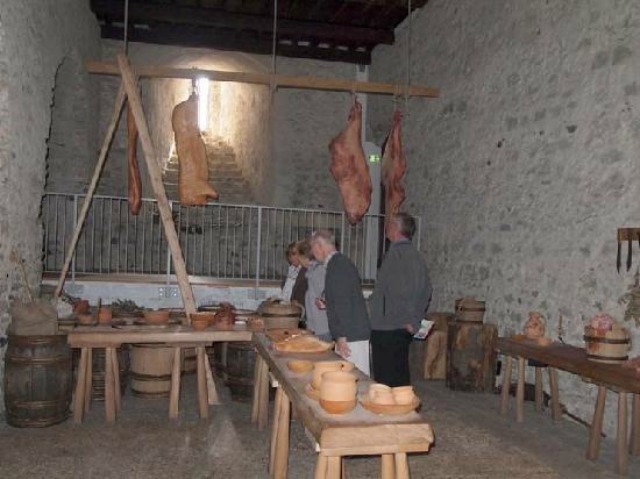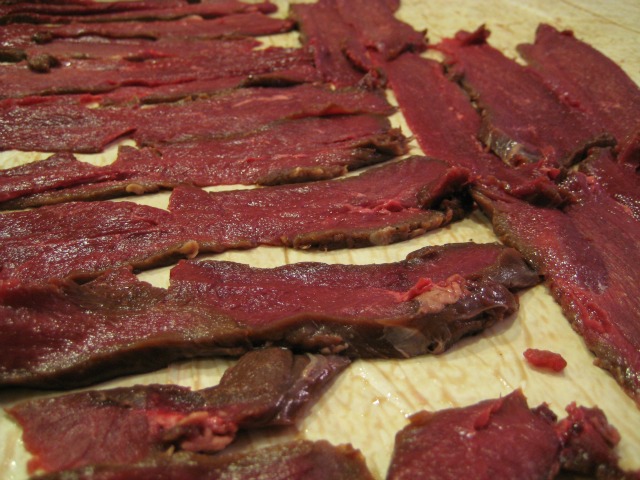Once upon a time, all an avid hunter needed was an Adirondack Guide and a campfire. The storied abundance of local hunting and fishing were an early attraction bringing visitors to our wilderness. This was especially true once W.H.H. Murray (aka Adirondack Murray) wrote "Adventures in the Wilderness," which was published in 1869.
The six million acres of the Adirondack Park still offer a great bounty of wildlife. But the modern meal-maker might feel a little daunted by the unfamiliar. I interviewed local cooks who come from family traditions of enjoying the delights of the forest. Here are some top tips for making the most of that wild game!
Tip One: Don't fear the fat
"This is the time of year the butchers started saving their pork fat," said a local who remembers that there were many area butchers when she was growing up. They would dress out the deer for a flat fee, returning the meat in the form of different cuts, and even sausage. "The pork fat would go right into the sausage mix, because venison is so lean."
Most wild game is lean. The meat is from active animals who are not fattened with grain, but graze and forage for foods they evolved to digest. This makes for the delightful, deep, flavors that wild game is known for. But it also means that supplemental fats are a must.
Duck fat is probably the most prized addition, but for pan searing, coconut oil stands up to the heat without breaking down, while the refined version does not add unwanted flavors. Go traditional with pork fat, find a source for beef tallow, or wrap cuts in bacon.
Because you just can't go wrong with bacon.
Tip Two: Prepare, prepare, prepare
For centuries, wild game was aged before cooking. For safety, we can do this in the refrigerator. Letting the meat "set" will allow natural enzymes to tenderize all parts of the meat, from the collagen that will melt into health-giving gelatin upon cooking to the muscle meats acquiring more flavor.
The USDA has a formula for refrigerator aging: A dressed deer weighing one hundred pounds needs to be aged at least three days at a temperature of thirty three degrees Fahrenheit. So don't rush the meat into the freezer right away. We'll be missing out on flavor and healthful enzyme activity.
Another important step is to brine the meat. This technique of soaking the meat in salt water, then letting it "rest," will add juiciness to lean cuts. We should also consider marinating the meat for enhanced flavor.
Another local cook calls this her Go To Marinade:
1 tbsp salt
1 tbs onion powder
1 tbs garlic powder
1 tsp pepper
1/2 tsp cayenne pepper
1 tbsp Worcestershire sauce
1/4 cup teriyaki sauce
Mix all these ingredients in a large mixing bowl and add the venison. Cover with saran wrap and let marinate over night.
"I let it marinate for 24 hours, to make sure the flavors soak right into the meat," she adds. "This takes care of the seasoning no matter what you'll be making."
Tip Three: Embrace the flavor
Many people are put off by describing the flavor of wild game as, well, "gamey." But we shouldn't fear the flavors of wildness. It may be much more complex and full-flavored than what we are used to, but that's a good thing. The recent movement in food enjoyment is towards more natural methods and more local acquisition. Wild game can fit right in.
One local family favorite is a Venison Stir Fry:
Step One: Take the venison out of the freezer and let it warm up just a bit, because it’s actually easier to trim and cut into slices. The best way to cut it is into thin slices and about 2” by 2”. It makes for a quick cooking time and perfect bite size chunks. While cutting the venison take a half a stick of butter, or 1/4 cup of oil if you prefer, and heat it on medium heat and toss in some sliced onions and peppers; any vegetables really taste great.
Step Two: Sauté the vegetables until they are tender and start to brown a little. This is all a preference area, some like the stir fry veggies to be super tender while others like to hear a snap when biting into the vegetable aspect. Eventually after a few rounds of this meal, you’ll get a feel for what the family prefers. When the vegetables are to texture, toss in the venison chunks. Due to the small cut of the venison it should only take maybe 5 minutes on each side, stir around the vegetables and venison until the light brown encompasses all the meat. You don’t want to under cook the venison, but it’s also very easy to overcook. When it looks like the meat is almost cooked through add the sauce.
The stir-fry sauce calls for:
1/8 tsp ground ginger (fresh is best)
2 tbsp brown sugar
3/4 tbsp flour (skip it for a gluten-free, thinner sauce)
1 dash red pepper flakes
1 1/2 tsp sesame oil (or favorite oil)
1 tbsp vinegar
2 tbsp soy sauce (or Bragg's Aminos, for people who need gluten free)
The cook continues: "These ingredients mix together for a tangy yet delicious stir-fry sauce. Once the sauce is added, mix everything in well and simmer for about 5 minutes. The flavor infused in the entire meal is amazing. Serve over rice or mashed potatoes for a quick and easy meal. I promise the bowl will be licked clean, and those who have eaten the meal will be full and happy."
Tip Four: Adjust cooking approaches
Our favorite moves from domestic meats might not work as well for game meats. A flexible approach is especially important for game birds. They use their muscles daily and are more mature than the birds from the supermarket. This can lead to different cooking approaches.
In the Middle Ages, cooks had the benefit of a dozen servants and a fireplace big enough to roast a whole catch in. Modern life requires some adjustment, since few of us have such advantages.

Henry the Eighth might have been often depicted waving a turkey leg, but such muscled meat in a wild bird might be better consumed ground up or reserved for soup.
We might have to adjust our approach, such as cooking parts separately instead of together in the case of a turkey, or choosing different methods than the ones we are used to. But this means we expand our repertoire, and get much better meals from our materials.
Tip Five: Experiment
Break out of the usual, and the meat will reward us. One such tactic is a favorite of this cook.
She tells me: "Venison makes a wonderful tender jerky and there are so many fun ways to prepare it, and endless recipes to try. I however was brought up with my dad making some wonderful homemade jerky, so I of course preserved some of his techniques in my own recipe.
"The venison is easier to cut when it’s still rather chilled, so I cut it about 45 minutes or so after I’ve taken it out of the freezer. This makes for similar and even sized cuts, to help the jerky all cook the same. Make sure to cut with the grain and to make it about 1/8” to 1/4” depending on your desired texture, you’ll need about 3-4 lbs of venison."

"Then comes the technique my father passed onto me. Take a cookie sheet and line it with tin foil and place it on the bottom rack of the oven. Now it’s time to hang the jerky. Take each piece of nicely marinated venison and slip a tooth pick through the top. This will be repeated for every slice of meat. Next pull the top rack in the oven and make sure it’s high enough to let the meat hang over the cooking sheet. Now take the meat and dangle it through the wire rack and use the tooth picks to hold it on the top rack. Lay every tooth pick on the top rack with the meat hanging over the pan, so drippings will be caught. Turn the oven on low to 150 degrees, and let the venison sit in there for up to 6 hours. If you prefer chewy jerky you’ll want to check it on and off. If you prefer crunchy jerky you can keep it in there until it’s at your preferred texture.
"I know most people enjoy using a dehydrator, but I've come to love the oven technique. Not only can you constantly check on the texture, but it’s also a lot easier to clean than your typical dehydrator. The jerky is a great snack for school, or even better to snack on while waiting in your blind for your next catch."
That's the spirit! There's no end to the ways we can enjoy our wild bounty. We just need to have fun with new ideas.
Have someone else cook the game by visiting one of our dining spots. The Adirondacks Alps Restaurant often has wild game on the menu. Relax with the perfect degree of rusticness in our many lodging choices. Don't go it alone! Get an Adirondack Guide.
Header photo is “A Good Time Coming” (1862) by Arthur Fitzwilliam Tait. By way of the Adirondack Museum, as reported by the Adirondack Almanac. Famous lithographers Currier and Ives published many Adirondack paintings, but Tait was the most popular.




